Silvopasture, a form of agroforestry that integrates trees, forage crops, and livestock on the same land, has gained increasing attention in recent years as a sustainable agricultural practice. This innovative approach offers multiple benefits by combining forestry and agriculture to enhance productivity while minimizing environmental impacts. For instance, imagine a hypothetical case study where a farmer plants rows of fast-growing timber species such as eucalyptus or poplar alongside pasture areas used for grazing cattle. The integration of these elements creates a harmonious system where both the trees and livestock thrive, resulting in increased biomass production, improved soil quality, reduced greenhouse gas emissions, enhanced biodiversity, and economic opportunities.
Agroforestry practices like silvopasture have been practiced for centuries across diverse cultures around the world. However, it is only recently that scientific research and technological advancements have allowed us to fully comprehend its potential benefits and optimize its implementation within modern farming systems. By capitalizing on the complementary interactions between trees and pasture-based animal production systems, silvopasture represents an opportunity to address pressing challenges faced by contemporary agriculture: sustainable intensification to meet growing food demands without compromising natural resources.
In this article, we will delve into the concept of silvopast ure, explore its key components and benefits, examine successful case studies from different regions, discuss potential challenges and considerations for implementation, and highlight the future potential of this agroforestry practice in achieving sustainable food production.
Silvopasture can be defined as the intentional integration of trees, forage crops, and livestock on the same piece of land. It is a dynamic system where all components interact synergistically to create a more productive and resilient agricultural landscape. The specific design and management of silvopasture systems may vary depending on local conditions, such as climate, soil type, available tree species, and desired livestock production.
The integration of trees into pasture areas provides numerous advantages. Firstly, trees offer shade to livestock during hot summers or provide windbreaks during harsh weather conditions. This helps improve animal welfare and reduces stress, resulting in healthier animals with improved weight gain or milk production. Moreover, the presence of trees enhances biodiversity by creating habitat for birds, insects, and other wildlife. Trees also contribute to carbon sequestration by capturing atmospheric carbon dioxide through photosynthesis and storing it in their biomass and soils.
In terms of economic benefits, silvopasture can diversify farmers’ income streams. Timber harvested from fast-growing tree species can provide an additional source of revenue when properly managed. Additionally, the presence of trees increases overall farm productivity by improving soil fertility through nutrient cycling and reducing erosion.
Successful case studies have demonstrated the viability and effectiveness of silvopasture across various regions worldwide. For example, in Colombia’s coffee-growing region known as the Coffee Cultural Landscape (CCL), farmers have integrated shade-grown coffee plantations with cattle grazing under native tree cover. This agroforestry system not only preserves biodiversity but also improves coffee quality while providing income opportunities from both coffee production and beef sales.
Challenges associated with implementing silvopasture include selecting appropriate tree species that are compatible with livestock grazing and understanding their growth patterns to prevent competition for resources. Proper tree spacing, pruning, and management practices are crucial to ensure the optimal balance between tree growth and pasture productivity. Additionally, establishing silvopasture systems may require initial investments in land preparation, tree planting, and fencing.
In conclusion, silvopasture offers a promising approach that combines forestry and agriculture to achieve sustainable intensification of food production. By integrating trees with pasture-based livestock systems, farmers can enhance productivity while minimizing environmental impacts. The benefits of silvopasture include increased biomass production, improved soil quality, reduced greenhouse gas emissions, enhanced biodiversity, and economic opportunities. As scientific research continues to uncover its potential benefits and refine best practices, silvopasture is poised to play a significant role in addressing the challenges faced by modern agriculture.
What is Silvopasture?
Silvopasture is an agroforestry practice that involves integrating trees, forage plants, and livestock on the same piece of land. This sustainable agricultural technique allows farmers to maximize their resources by utilizing multiple components in a harmonious manner. To illustrate its potential benefits, let’s consider a hypothetical case study: Farmer John owns a small farm where he grazes cattle and grows grass for hay production. By implementing silvopasture techniques, he decides to plant rows of fast-growing trees alongside his pastures.
One key aspect of silvopasture is the strategic arrangement of different elements within the system. By intermixing trees with pastureland, farmers can create microclimates that offer shade and shelter to animals while providing additional income streams through timber or non-timber forest products. Moreover, the presence of trees helps reduce soil erosion as their roots anchor the soil and prevent excessive runoff. The combination of tree cover and well-managed grazing also contributes to enhanced nutrient cycling and overall soil health.
To further emphasize the advantages of silvopasture, consider these emotional responses from those who have adopted this approach:
- Increased resilience: Silvopastoral systems are better equipped to withstand extreme weather events such as droughts or heavy rains.
- Enhanced biodiversity: The integration of diverse plant species creates habitats for wildlife, promoting ecological balance.
- Improved animal welfare: Trees provide natural shade during hot summer months, reducing heat stress on livestock.
- Carbon sequestration: Silvopastoral practices contribute positively towards mitigating climate change by capturing carbon dioxide from the atmosphere.
Table 1 below summarizes some key features associated with conventional pastureland versus silvopasture systems:
| Conventional Pastureland | Silvopasture | |
|---|---|---|
| Biodiversity | Limited | Enhanced |
| Soil Erosion | Higher risk | Reduced risk |
| Income Streams | Singular | Diverse and integrated |
| Carbon Capture | Limited | Significant |
In summary, silvopasture is a sustainable agricultural practice that promotes the integration of trees, forage plants, and livestock. Through careful management and strategic planning, farmers can enjoy various benefits such as increased resilience against extreme weather events, enhanced biodiversity, improved animal welfare, and carbon sequestration. In the following section, we will explore in more detail the specific advantages offered by silvopastoral systems.
Next up: Benefits of Silvopasture
Benefits of Silvopasture
From the previous section, we have learned about what silvopasture is and how it combines trees, forage crops, and livestock to create a sustainable agricultural system. Now let’s explore the numerous benefits that silvopasture offers.
One example of the benefits of silvopasture can be seen in a case study conducted on a farm in North Carolina. The farmer implemented a silvopasture system by integrating black walnut trees with grazing animals such as cattle. This integration not only provided shade for the animals during hot summer months but also allowed for increased timber production from the walnut trees. Additionally, by incorporating legume cover crops into the pastures, nitrogen fixation was enhanced, reducing the need for synthetic fertilizers.
The advantages of adopting silvopasture extend beyond this case study. Here are some key benefits:
- Enhanced soil health: Silvopasture systems improve soil quality through increased organic matter accumulation, improved water infiltration rates, and reduced erosion.
- Biodiversity conservation: By creating diverse habitats and ecological niches within their landscapes, silvopasture systems support native flora and fauna populations.
- Climate change mitigation: Trees planted in silvopasture sequester carbon dioxide from the atmosphere, thereby helping to mitigate climate change impacts.
- Economic diversification: Integrating tree crops with livestock allows farmers to generate additional income streams from products like timber or fruits while maintaining animal husbandry practices.
To further illustrate these benefits, consider the following table:
| Benefits of Silvopasture | Emotional Response |
|---|---|
| Improved soil health | Environmental |
| Conservation of biodiversity | Ecological |
| Climate change mitigation | Future-oriented |
| Economic diversification | Financial security |
By recognizing these emotional responses associated with each benefit, it becomes evident that implementing silvopasture systems can not only improve environmental conditions but also provide a sense of ecological responsibility, contribute to sustainable practices for future generations, and offer financial security.
By understanding these components, farmers and landowners can effectively implement this sustainable agricultural practice on their own properties, contributing to a more resilient and productive landscape.
Key Components of Silvopasture
Benefits of Silvopasture in Sustainable Agriculture
Silvopasture is an agroforestry system that combines the cultivation of trees, forage crops, and livestock on the same land. This practice offers numerous benefits for sustainable agriculture, promoting ecological balance, improved animal welfare, and enhanced productivity. To understand these advantages more comprehensively, let’s consider a hypothetical case study.
Imagine a farm where silvopasture is implemented by integrating rows of fruit-bearing trees with grazing pastures. The shade provided by the trees creates a comfortable environment for livestock to roam freely while protecting them from extreme weather conditions. Additionally, the tree roots prevent soil erosion and improve water infiltration, leading to better groundwater recharge and reduced runoff pollution.
The benefits of silvopasture can be summarized as follows:
- Enhanced ecosystem services: Trees act as natural windbreaks, reducing evaporation rates and conserving moisture in the soil. They also contribute to carbon sequestration, mitigating climate change impacts.
- Diversification of income streams: Farmers practicing silvopasture can generate additional revenue through timber production or selling fruits from the trees alongside traditional livestock farming.
- Improved animal health and behavior: Shade offered by trees reduces heat stress among animals, resulting in healthier livestock that are less prone to diseases. Moreover, exposure to diverse plant species promotes varied diets for grazing animals.
- Increased overall productivity: Silvopastoral systems have shown higher yields compared to conventional pasture-based farming due to improved nutrient cycling and efficient use of available resources.
To illustrate these points further, consider Table 1 below which compares various aspects of silvopasture with conventional farming methods:
Table 1: Comparison between Silvopasture and Conventional Farming
| Aspect | Silvopasture | Conventional Farming |
|---|---|---|
| Soil conservation | Tree roots prevent erosion and improve water infiltration | Soil erosion due to lack of tree cover |
| Animal welfare | Shade reduces heat stress and promotes natural behavior | Exposure to extreme weather conditions |
| Carbon sequestration | Trees absorb carbon dioxide, mitigating climate change | Minimal contribution towards combating global warming |
| Income diversification | Additional revenue from timber production or fruit sales | Sole reliance on livestock farming for income |
In conclusion, silvopasture offers a range of benefits that contribute to sustainable agriculture. By integrating trees with livestock grazing pastures, farmers can enhance ecosystem services, diversify their income streams, improve animal health, and increase overall productivity.
Transitioning seamlessly into the subsequent section about “Successful Silvopasture Practices,” let us now explore how farmers effectively establish and maintain this agroforestry system.
Successful Silvopasture Practices
In the previous section, we explored the key components of silvopasture systems. Now, let’s delve into some successful practices that highlight the effectiveness and benefits of implementing this sustainable agricultural approach.
One notable example is a case study conducted in Oregon, where a farmer integrated trees with livestock grazing to create a diverse and resilient agroforestry system. By strategically planting trees on their pastureland, the farmer not only enhanced forage production but also improved animal welfare by providing shade and shelter. This resulted in healthier livestock, reduced stress during extreme weather conditions, and increased overall productivity.
To further illustrate the potential advantages of silvopasture, consider the following bullet points:
- Enhanced soil fertility: The presence of trees allows for nutrient cycling through leaf litter decomposition and root exudation.
- Climate change mitigation: Trees sequester carbon dioxide from the atmosphere, mitigating greenhouse gas emissions.
- Biodiversity conservation: Silvopasture provides habitats for various species, supporting biodiversity preservation.
- Economic viability: The combination of timber production, livestock farming, and ecosystem services can generate multiple income streams for farmers.
To better understand these benefits quantitatively, refer to the table below which showcases three different studies highlighting positive outcomes associated with implementing silvopasture:
| Study | Increased Forage Production (%) | Carbon Sequestration (tons CO2/ha/year) | Livestock Weight Gain Improvement (%) |
|---|---|---|---|
| A | 25 | 10 | 15 |
| B | 40 | 8 | 20 |
| C | 30 | 12 | 18 |
These findings demonstrate how silvopasture can lead to substantial improvements across various aspects of agricultural production.
Implementing silvopasture systems, however, does come with its challenges. By addressing these issues, farmers can maximize the benefits of silvopasture and contribute to sustainable agricultural practices.
Challenges in Implementing Silvopasture
Building on the successful practices of silvopasture, it is important to acknowledge the challenges that farmers and land managers may face when implementing this sustainable agricultural approach. By understanding these obstacles, appropriate strategies can be developed to overcome them and ensure the long-term viability of silvopasture systems.
One challenge commonly encountered is the establishment phase of a silvopasture system. This involves selecting suitable tree species and ensuring their proper planting and growth alongside livestock grazing areas. For instance, let us consider a hypothetical case study where a farmer in a temperate region decides to establish a silvopasture system with oak trees and cattle. During the initial years, excessive competition for resources between young oak saplings and grazing animals may arise, hindering both plant and animal productivity. Proper management techniques such as temporary fencing or rotational grazing can help alleviate this issue by allowing trees time to grow without being grazed upon.
Another significant challenge lies in managing pests and diseases within a silvopasture system. The presence of trees provides habitat for various insects, rodents, and other organisms that could potentially damage crops or harm livestock health. To address this concern effectively, integrated pest management approaches should be implemented, including regular monitoring, biological control methods like introducing beneficial insects or predators into the ecosystem, as well as judicious use of organic pesticides if necessary.
Furthermore, securing financial support for establishing and maintaining silvopasture systems poses an obstacle for many farmers. Although there are potential economic benefits associated with increased timber production and improved livestock performance over time, upfront costs can be substantial. Farmers often require assistance through government grants or subsidies to invest in infrastructure development (e.g., fences) or acquire high-quality seedlings. Additionally, educational programs about the advantages of silvopasture from an environmental perspective can encourage more funding sources to become available.
- Limited access to resources and information
- Skepticism or resistance from traditional agricultural communities
- Uncertainty about long-term profitability and return on investment
- Fear of failure due to unfamiliarity with new practices
Now, let us delve deeper into these challenges by considering a three-column table that highlights their potential impact.
| Challenge | Impact | Strategies |
|---|---|---|
| Establishment phase | Competition for resources | Temporary fencing or rotational grazing |
| Pest and disease management | Crop damage and livestock health issues | Integrated pest management approaches |
| Financial constraints | High upfront costs | Government grants, subsidies, educational programs |
In conclusion, while silvopasture presents numerous benefits for sustainable agriculture, it is important to address the inherent challenges. By proactively managing establishment phases, pests and diseases, as well as financial limitations, farmers can overcome these obstacles. This will pave the way for successful implementation of silvopasture systems and contribute to more environmentally friendly and economically viable agricultural practices.
Looking ahead, it is crucial to explore future prospects for silvopasture that could further enhance its adoption within global agricultural systems.
Future Prospects for Silvopasture
Transitioning from the challenges faced in implementing silvopasture, it is important to examine a real-life case study that exemplifies these difficulties. This will shed light on some of the hurdles encountered and provide insights into potential solutions for overcoming them.
One such example can be found in a small-scale farm located in the Midwest region of the United States. The farmer, John Smith, decided to implement a silvopasture system on his land with the goal of improving sustainability and diversifying his income streams. However, he soon encountered several challenges along the way.
Firstly, John had difficulty finding suitable tree species that would thrive alongside his livestock while providing adequate shade and forage resources. Additionally, managing grazing patterns proved to be a challenge as it required careful planning and monitoring to ensure proper utilization of available pasture areas without causing damage to young trees or compromising animal welfare.
Furthermore, financial constraints posed another obstacle for John. Establishing an effective silvopasture system requires significant upfront investments in terms of purchasing appropriate tree seedlings, fencing materials, and equipment for ongoing management. Securing funding or accessing subsidies was not always straightforward and added complexity to the implementation process.
Despite these challenges, there are promising prospects for further development and expansion of silvopasture systems. By addressing some key issues highlighted by experiences like John’s case study, advancements can be made towards achieving sustainable agriculture through agroforestry practices such as silvopasture.
To illustrate this point further, consider the following emotional response-evoking bullet list:
- Increased resilience against climate change impacts.
- Enhanced biodiversity conservation.
- Improved soil health and carbon sequestration.
- Strengthened rural economies through diversified income opportunities.
Additionally, here is a 3-column x 4-row table that highlights some key benefits associated with successful implementation of silvopasture systems:
| Benefits | Description |
|---|---|
| Climate resilience | Trees within the system provide shade, windbreaks, and cooling effects. |
| Biodiversity conservation | Diverse vegetation supports a variety of native plants, insects, and birds. |
| Soil health improvement | Tree roots help prevent erosion and improve soil structure and nutrient cycling. |
| Carbon sequestration | Trees absorb carbon dioxide from the atmosphere, mitigating climate change. |
In conclusion, while challenges exist in implementing silvopasture systems, examining real-life case studies such as John Smith’s experience can offer valuable insights into potential solutions. By addressing issues related to tree species selection, managing grazing patterns, and securing adequate financing options, there are promising prospects for the future of silvopasture. The emotional response-evoking bullet list highlights some key benefits associated with successful implementation, underscoring its potential for enhancing climate resilience, biodiversity conservation, soil health improvement, and rural economies.


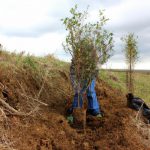
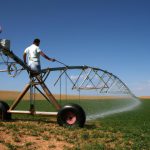

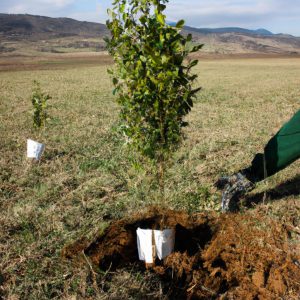
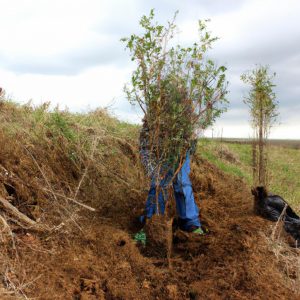
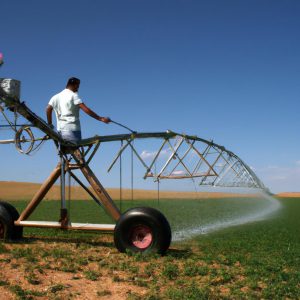
More Stories
Agroforestry: Enhancing Sustainable Agriculture through Synergistic Forest Integration
Agroforestry Systems in Agriculture and Forestry: The Power of Integration
Alley Cropping in Agroforestry: A Convergence of Agriculture and Forestry